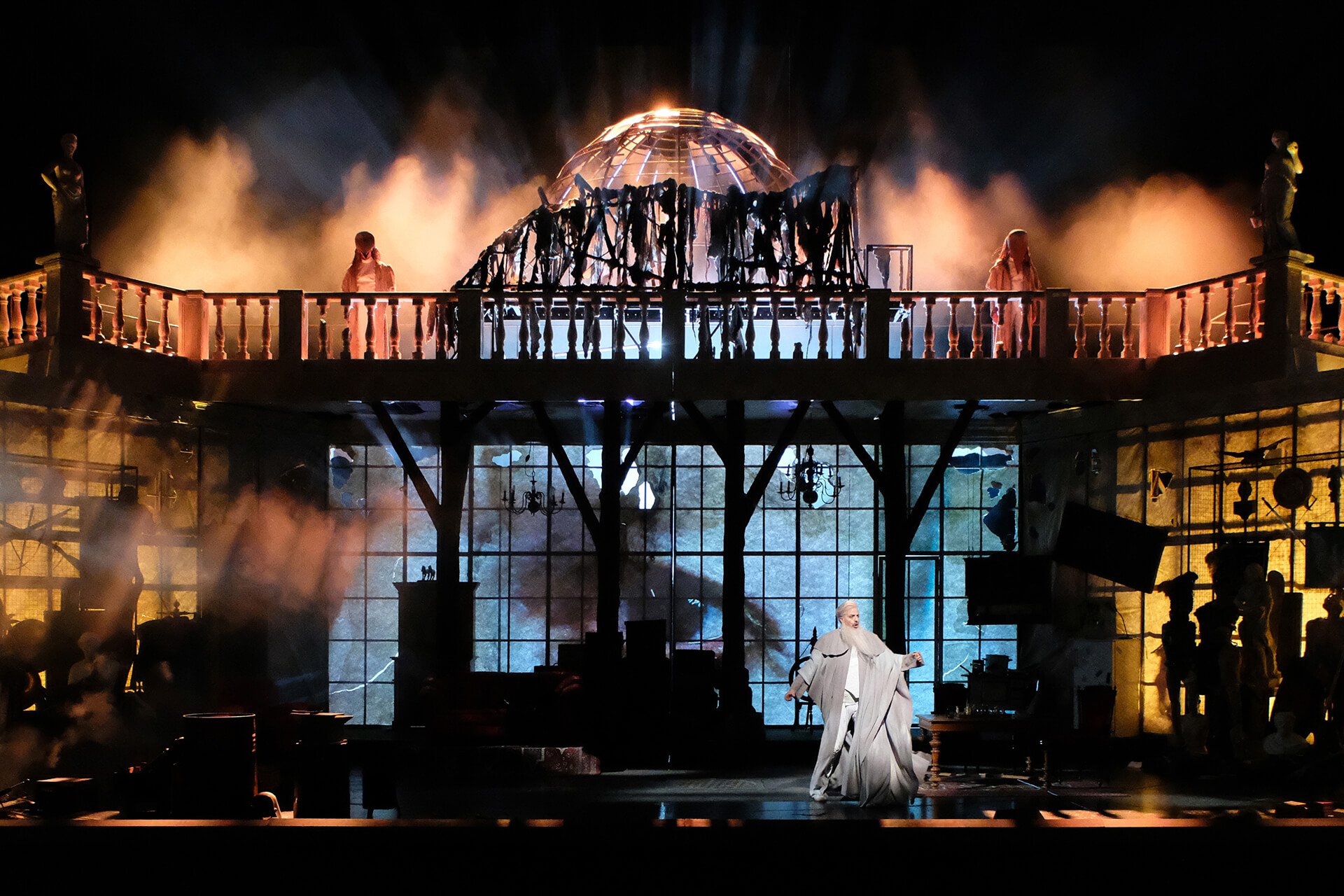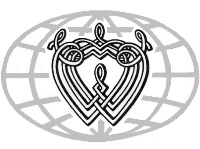News
27.03.2019
Stichwort Wagner - report on this year's Symposium
Around 90 participants from Germany, Austria and other lands accepted the invitation of the WS Munich in co-operation with the Richard Wagner Association International to attend the 2019 Keyword Wagner Symposium, supported by the Wolfgang und Hedda Reuss Foundation. For the third time (in 2016 for "Richard Wagner as revolutionary" and in 2010 "I still owe the world a Tannhäuser") a group of Wagner enthusiasts gathered in a Catholic Retreat facility in the outskirts of Munich.
This time, the title of the Symposium perfectly matched the religious setting of the Fürstenried Schloss:
The six papers were on the topic, decided by the organiser, Karl Russwurm "Richard Wagner and Religion".
After the opening and greeting given by RWVI President Horst Eggers and the introduction by Karl Russwurm, the audience was immediately plunged into the subject at hand:
The well-known and popular Dr. Oswald Georg Bauer gave a somewhat unflattering picture bordering on “blasphemy” of the early presentation of Parsifal under Richard Wagner himself and later under Cosima Wagner as Festival Director along with the so-called "Bayreuth Circle". The aim was to overwhelm the audience through pseudo-religious exaggeration and godlike worship of the creator of the "Stage Consecration Festival". This would seem intolerable from today’s standpoint. Professor Bauer contrasted this approach with exemplary productions by Wolfgang Wagner.
Saturday began with an A-Z of the examples of prayers and rituals in the works of Wagner developed and presented by Dr. Frank Piontek from Bayreuth. In almost all of Wagner's works at least one of the following forms of religious output can be found: prayer, curse, greeting, homage, worship, morning prayer, God's court, ritual, chorale, Salve Regina, blessing etc.
This was followed by a presentation by Dr. Bernd Rill from Munich, drawing on a wide and intelligent compilation of examples ranging from the Homeric world of legends and Greek tragedy to Kant's "Critique of Pure Reason", Romanticism and Schopenhauer's philosophy, to the elevation of art to the rank of a substitute religion, especially in the 19th century.
Dr. Danielle Buschinger placed syncretism in Wagner's "Parsifal" in the foreground of her exciting lecture and concentrated especially on Wagner's preoccupation with Buddhism and its traces in the master's work.
After each lecture and at the end of the Saturday (panel discussion) there was enough time for discussions and questions and it turned out that quite a few of the participants had a well-founded store of knowledge, which could have qualified them to contribute one of the lectures themselves.
On Sunday Dr. Ulrike Kienzle took up the topic of Buddhism under the title "The Nirvana of Sound". With impressive sheet music and audio music examples, she compiled numerous interesting facts. She also succeeded in making it possible to experience emotionally the climax of music history that was reached, especially in Tristan, such that in the best performances an unbelievable intensity of feelings is communicated to the vast majority of viewers. The reasons for this were subtly worked out, and in some cases the cleverly chosen musical examples made it possible to experience them directly.
Finally, Dr. Oswald Panagl from Salzburg had the harder task of bringing the audience back to solid ground with his skilful etymological observations and subtle hints on Wagner's treatment of language in his masterpieces ("He created the "sanctuary" for himself for healing”).
At the end of the conference, participants had to leave the luminous heights in order to return to the everyday reality of the 21st century.
Two short concerts (Felix Spreng played excerpts from "Parsifal" and "Rienzi" on the grand piano on Saturday, followed by "Das Liebesmahl der Apostel" on CD; Rossini Hayward premiered his "Rheingold-Fantasie" on the classical guitar on Friday) and an exhibition of stage photos of well-known performances (Rienzi, Parsifal, Tannhäuser) by Heinz-Lukas Kindermann rounded off the weekend.
The attendance at a performance of "Parsifal" at the Bavarian State Opera on Sunday made hearts beat faster, not least due to the orchestral contribution to the evening (especially from conductor Kirill Petrenko).
What we came away with from this dense Wagner weekend was the certainty that we are all far from completing our journey across the illuminated Wagner cosmos. This is precisely what makes Wagner so fascinating.
This time, the title of the Symposium perfectly matched the religious setting of the Fürstenried Schloss:
The six papers were on the topic, decided by the organiser, Karl Russwurm "Richard Wagner and Religion".
After the opening and greeting given by RWVI President Horst Eggers and the introduction by Karl Russwurm, the audience was immediately plunged into the subject at hand:
The well-known and popular Dr. Oswald Georg Bauer gave a somewhat unflattering picture bordering on “blasphemy” of the early presentation of Parsifal under Richard Wagner himself and later under Cosima Wagner as Festival Director along with the so-called "Bayreuth Circle". The aim was to overwhelm the audience through pseudo-religious exaggeration and godlike worship of the creator of the "Stage Consecration Festival". This would seem intolerable from today’s standpoint. Professor Bauer contrasted this approach with exemplary productions by Wolfgang Wagner.
Saturday began with an A-Z of the examples of prayers and rituals in the works of Wagner developed and presented by Dr. Frank Piontek from Bayreuth. In almost all of Wagner's works at least one of the following forms of religious output can be found: prayer, curse, greeting, homage, worship, morning prayer, God's court, ritual, chorale, Salve Regina, blessing etc.
This was followed by a presentation by Dr. Bernd Rill from Munich, drawing on a wide and intelligent compilation of examples ranging from the Homeric world of legends and Greek tragedy to Kant's "Critique of Pure Reason", Romanticism and Schopenhauer's philosophy, to the elevation of art to the rank of a substitute religion, especially in the 19th century.
Dr. Danielle Buschinger placed syncretism in Wagner's "Parsifal" in the foreground of her exciting lecture and concentrated especially on Wagner's preoccupation with Buddhism and its traces in the master's work.
After each lecture and at the end of the Saturday (panel discussion) there was enough time for discussions and questions and it turned out that quite a few of the participants had a well-founded store of knowledge, which could have qualified them to contribute one of the lectures themselves.
On Sunday Dr. Ulrike Kienzle took up the topic of Buddhism under the title "The Nirvana of Sound". With impressive sheet music and audio music examples, she compiled numerous interesting facts. She also succeeded in making it possible to experience emotionally the climax of music history that was reached, especially in Tristan, such that in the best performances an unbelievable intensity of feelings is communicated to the vast majority of viewers. The reasons for this were subtly worked out, and in some cases the cleverly chosen musical examples made it possible to experience them directly.
Finally, Dr. Oswald Panagl from Salzburg had the harder task of bringing the audience back to solid ground with his skilful etymological observations and subtle hints on Wagner's treatment of language in his masterpieces ("He created the "sanctuary" for himself for healing”).
At the end of the conference, participants had to leave the luminous heights in order to return to the everyday reality of the 21st century.
Two short concerts (Felix Spreng played excerpts from "Parsifal" and "Rienzi" on the grand piano on Saturday, followed by "Das Liebesmahl der Apostel" on CD; Rossini Hayward premiered his "Rheingold-Fantasie" on the classical guitar on Friday) and an exhibition of stage photos of well-known performances (Rienzi, Parsifal, Tannhäuser) by Heinz-Lukas Kindermann rounded off the weekend.
The attendance at a performance of "Parsifal" at the Bavarian State Opera on Sunday made hearts beat faster, not least due to the orchestral contribution to the evening (especially from conductor Kirill Petrenko).
What we came away with from this dense Wagner weekend was the certainty that we are all far from completing our journey across the illuminated Wagner cosmos. This is precisely what makes Wagner so fascinating.




